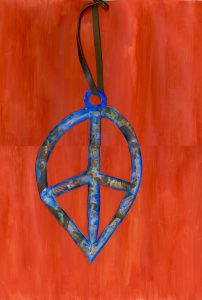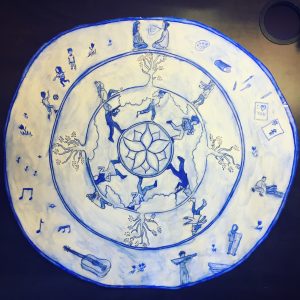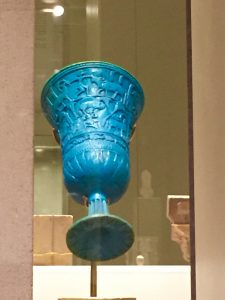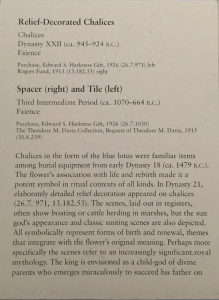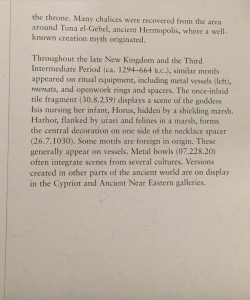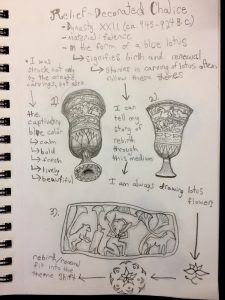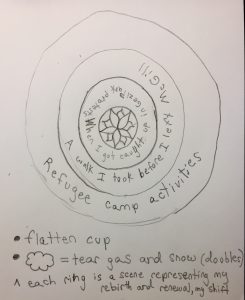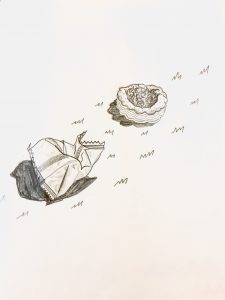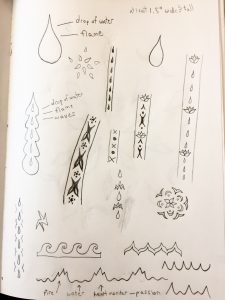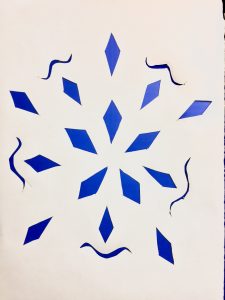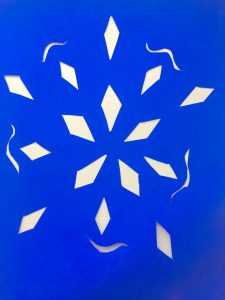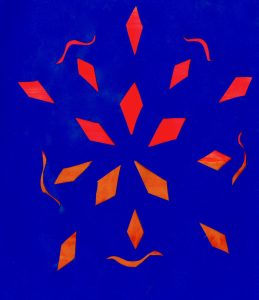The object for my Still Life collage is a peace sign necklace that was given to me when I was 6 years old at a New York protest against the Iraq War.
Half the height of the other protestors, I decided to revive the chant after it had died down: “What do we want?” “PEACE!” “When do we want it?” “NOW!” The chanting attracted a lot of attention, including a lot of surprised faces, a radio journalist who interviewed me, and a man who I will never forget.
“You’re quite the leader,” he said to me. “You remind me of myself when I was your age. When I was a kid I marched against the Vietnam War, and a man came up to me and gave me this necklace…”
He handed it to me: a silver metal peace sign hung on a thick leather chord.
“The man told me it symbolized peace,” he said. “He passed it onto me for marching, and now it’s my turn to pass it onto you.
“Someday you can pass it on to the next person who deserves it.”
This necklace will never lose its meaning, but after moving to so many different places, things are easily forgotten or misplaced. I’m pretty sure that today it sits in a box somewhere in Vermont. Whether I have the object with me or not, I will never lose what it represents.
Colors: Blueish silver, very dark brown, warm reddish orange. The orange reminds me of the shirt my mother was wearing, along with a wall in the apartment we lived in when we went to this march. This color feels like home to me, warm, cozy, and familiar, but exciting and lively at the same time. When I see this color, a flood of childhood memories washes over me.
Textures: Strong, smooth texture of the metal peace symbol, next to the earthy, gritty texture of the leather cord it hangs from…
Here are some photos from that day:
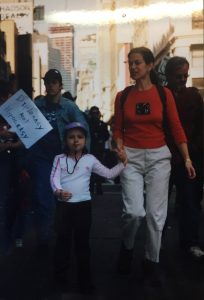
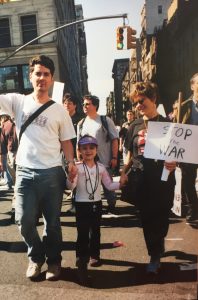
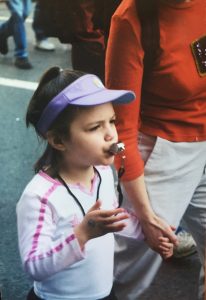

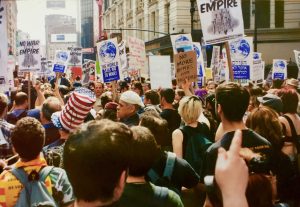
I decided to use the actual photos from the day, cut them up, and put them into the shape of a peace sign to show how this object is rich with memories and lessons. I painted blue over it, partially because the color blue means a lot of different things to me, partially because it represents the silver metal, and partially because it is a the complementary color of the orange background.
I wanted the piece to feel more real, so I bought an actual leather chord and weaved it through the paper. I painted the background a warm reddish orange color, to emphasize the nostalgia around this object and the passion for activism that it ignited in me.
I’m not very happy with the quality of this final piece, but I am very proud of the rich symbolism and the extensive thought I put into it.
